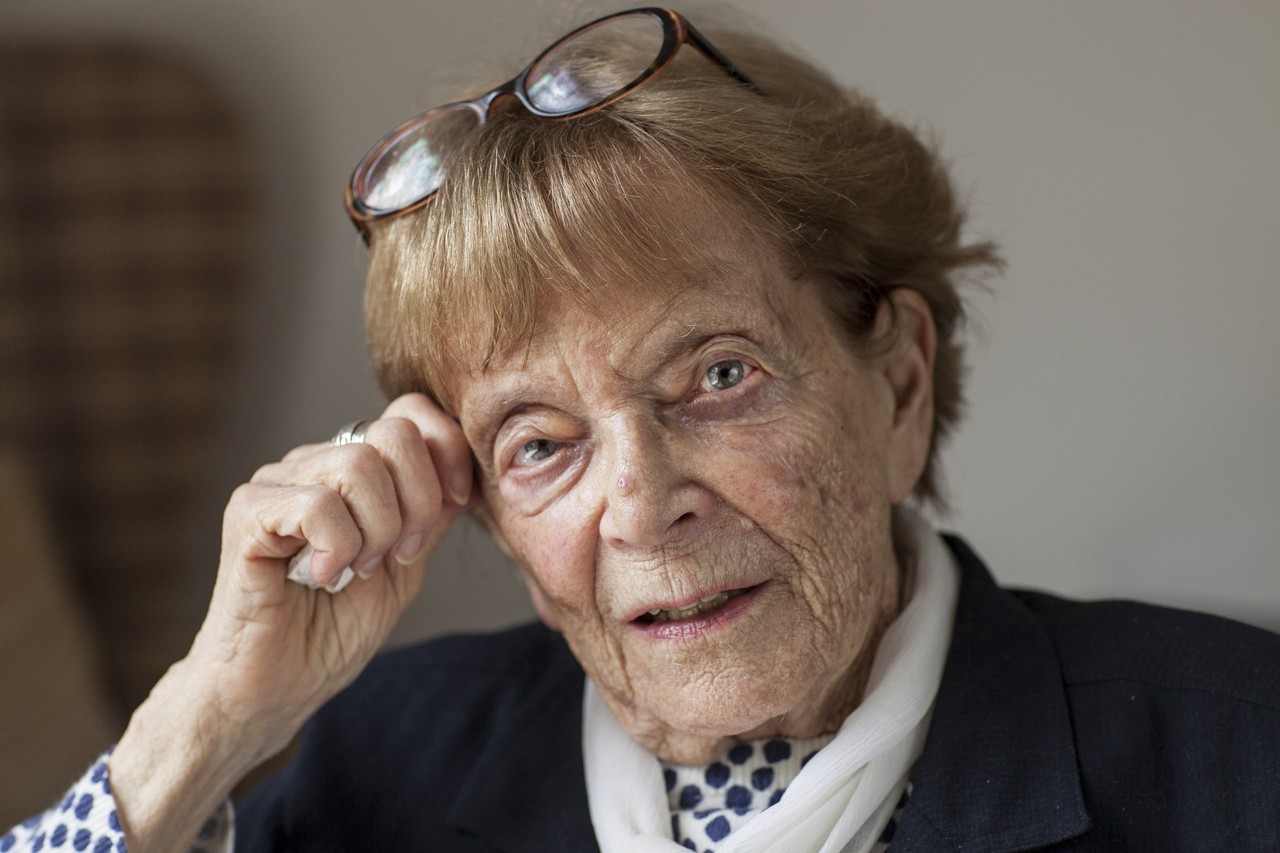Evelyn Lipmann è stata una delle straordinarie sopravvissute all'Olocausto che si sono trasferite in Inghilterra dopo la liberazione di migliaia di ebrei dai campi di concentramento nazisti. Evelyn è cresciuta a Vienna prima dello scoppio della guerra. Le limitazioni imposte agli ebrei dopo l'annessione dell'Austria nel 1938 hanno fatto sì che la sua infanzia e la sua istruzione venissero interrotte. Nonostante ciò, le piaceva frequentare i corsi d'arte per i quali si toglieva di nascosto il distintivo giallo, per potervi partecipare senza essere controllata. Nel 1940, Evelyn e la sua famiglia subirono un trattamento antisemita ancora maggiore. Furono costretti a confezionare uniformi naziste tedesche per ore al giorno e furono di fatto agli arresti domiciliari.
La sua famiglia fu inizialmente trasferita a Terezín nel 1943, per poi essere trasferita nei campi di Auschwitz, Bergen-Belsen e Salzwedel. All'arrivo ad Auschwitz, i membri della famiglia furono separati. I loro vestiti furono presi e bruciati e a lei fu tatuato un numero. Sua madre mentì sulla sua età, sperando di essere selezionata per lavorare e avere maggiori possibilità di sopravvivere. Ciò significa che sia lei che Evelyn sopravvissero alla guerra, un evento raro data la preferenza dei nazisti per risparmiare solo i giovani e le persone in forma. Non si sa molto di ciò che accadde al padre, se non che non sopravvisse alla prova. Quando furono ispezionati e fu data loro la possibilità di rimanere a Bergen-Belsen o di trasferirsi nel campo di lavoro di Salzwedel, scelsero la seconda opzione. Qui furono utilizzati come schiavi per la produzione di munizioni. Evelyn e sua madre sopravvissero per diciotto mesi nei campi prima di essere liberate dalla nona armata statunitense nell'aprile 1945. In seguito, Evelyn rimase nella zona mentre si riprendeva dal tifo sviluppato nel campo. Prima di iniziare il viaggio di ritorno a Vienna, le fu data una pagina di un atlante per bambini per aiutarla a terminare il viaggio, che completò per la maggior parte a piedi. Tuttavia, ci volle più tempo del previsto, poiché molte zone erano impraticabili a causa del controllo russo. Nell'ottobre 1945 arrivò in un'area di reinsediamento ebraico a Vienna.
A Vienna Evelyn riuscì a imparare un po' di inglese, il che le valse un lavoro presso le forze di occupazione statunitensi, preparandola al trasferimento in Inghilterra. Raggiunse i parenti che già risiedevano a Walton-on-Thames e incontrò rapidamente suo marito prima di mettere su famiglia. Ha vissuto lì fino alla sua morte e ha collaborato con l'Holocaust Educational Trust e l'Associazione dei rifugiati ebrei per condividere la sua storia.
